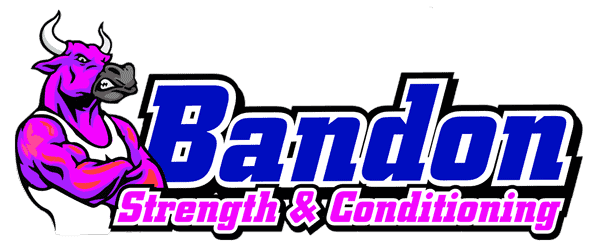Did you know that the number of adults over 55 is growing rapidly, with over 1 billion seniors projected globally by 2030? This demographic shift, known as “The Silver Tsunami,” has sparked a wave of proactive health among seniors. As seniors embrace the benefits of exercise and physical activity, strength training has emerged as a vital component of their fitness journey.
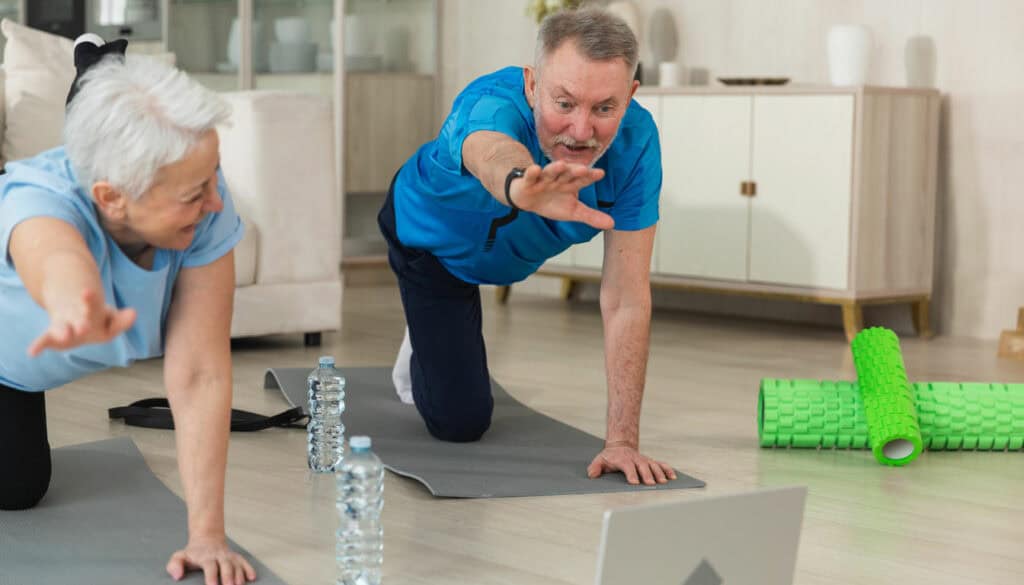
Key Takeaways:
- Strength training is crucial for seniors to maintain strength, independence, and overall well-being.
- As the aging population grows, age-friendly fitness programs are offering tailored exercise options for seniors.
- Strength training can enhance muscular strength, improve physical function, and manage chronic health conditions.
- Tailored exercise programs can help reverse frailty in older adults.
- Proper warm-up, cool-down, and technique are essential for safe and effective senior training.
The Rising Tide of Proactive Health Among Seniors
In recent years, there has been a significant shift in the mindset of seniors towards proactive health and wellness. As the baby boomer generation continues to age, this demographic known as the aging population, has recognized the importance of exercise and physical activity in maintaining their well-being. Termed “The Silver Tsunami,” the growing number of adults over 55 years old has created a wave of change in the approach to fitness among seniors.
Understanding “The Silver Tsunami”
“The Silver Tsunami” refers to the increasing number of adults who are aged 55 and above. With longer life expectancies and advancements in healthcare, the population of seniors is growing rapidly. This has significant implications for healthcare systems and emphasizes the need for seniors to take a proactive stance in managing their health. Rather than solely relying on medical interventions, seniors are recognizing the importance of actively participating in exercise and physical activity to promote their overall well-being.
The Shift in Seniors’ Approach to Fitness
Gone are the days when aging was associated with sedentary lifestyles. Today, seniors are challenging stereotypes and embracing the benefits of an active lifestyle. They are increasingly engaging in exercise and physical activity, thereby improving their quality of life and longevity. This shift in approach is driven by a desire for proactive health wherein seniors take charge of their well-being through regular exercise, maintaining physical activity levels, and prioritizing their health as they age.
Walking Isn’t Enough: The Need for Strength Training in Later Years
While walking is a beneficial form of exercise, it is not enough on its own to maintain overall health and fitness in later years. The American College of Sports Medicine (ACSM) recommends a combination of cardiovascular activity, strength training, and balance training for optimal health benefits.
Strength training is particularly important for seniors as it helps to build and maintain muscle mass, increase bone density, and improve overall strength and balance. It can also aid in managing chronic conditions such as osteoarthritis and osteoporosis. By engaging in regular strength training exercises, seniors can improve their physical function and enhance their ability to perform daily activities with ease.

Incorporating strength training into a senior’s physical activity routine can provide numerous benefits, both physical and psychological. Research has shown that strength training can boost metabolism, increase energy levels, and enhance heart health. It can also improve mental well-being, reduce symptoms of depression and anxiety, and promote a greater sense of independence and confidence in daily life.
By including strength training as part of a comprehensive exercise program, seniors can enjoy long-term health maintenance and well-being. It’s important to consult with a healthcare professional or certified exercise specialist to develop an appropriate and individualized strength training plan that takes into account any existing health conditions or physical limitations.
Remember, it’s never too late to start reaping the benefits of strength training. With the right guidance and a commitment to regular exercise, seniors can maintain their health, vitality, and quality of life well into their later years.
Defying Age: Proven Benefits of Seniors Training
Strength training for seniors has been proven to provide numerous benefits. It helps enhance muscular strength and mass, improve physical function, and manage chronic health conditions such as diabetes and osteoporosis. Additionally, strength training can help seniors manage conditions like low back pain and obesity.
Enhancing Muscular Strength and Mass
One of the key benefits of seniors training is the enhancement of muscular strength and mass. As people age, they naturally experience a decline in muscle mass and strength, known as sarcopenia. Strength training exercises, such as lifting weights or using resistance bands, help to counteract this age-related muscle loss. By engaging in regular strength training, seniors can build and maintain lean muscle mass, improving their overall strength and physical performance.
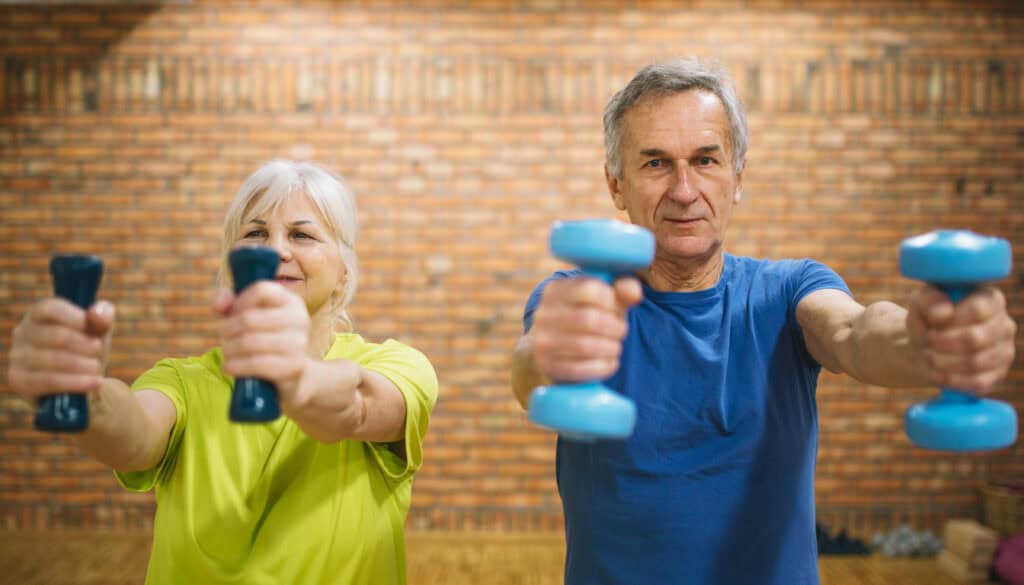
Improving Physical Function and Chronic Condition Management
In addition to enhancing muscular strength, seniors training also plays a crucial role in improving physical function and managing chronic conditions. Regular strength training exercises help to improve balance, coordination, and mobility, reducing the risk of falls and injuries. By increasing overall physical function, seniors can maintain their independence and quality of life as they age.
Furthermore, strength training has been found to be beneficial for managing chronic health conditions commonly experienced by seniors. For example, strength training exercises can help regulate blood sugar levels, making it an effective tool for diabetes management. Additionally, it can help improve bone density and prevent osteoporosis, a condition characterized by weak and brittle bones.
Moreover, strength training can assist in managing other chronic conditions, such as low back pain and obesity. Strengthening the muscles around the lower back can alleviate pain and improve spinal stability, while strength training combined with cardiovascular exercise contributes to weight loss and weight management.
By incorporating seniors training into their fitness routine, older adults can experience a wide range of benefits, from increased strength and mobility to better management of chronic conditions. It is essential for seniors to consult with a healthcare professional or a certified personal trainer to develop a safe and effective strength training program tailored to their individual needs and capabilities.
Reversing Frailty: Tailoring Exercise to Senior Needs
Frailty is a common concern among older adults, but research has shown that tailored exercise programs can help reverse frailty in seniors. By incorporating strength training exercises that target specific needs and abilities, seniors can regain strength, improve balance, and increase overall functionality.
Strength training plays a crucial role in combating frailty in older adults. As we age, our muscles naturally weaken, which can lead to a loss of independence and increased vulnerability to injury. However, through targeted and tailored exercise, seniors can work towards reversing the effects of frailty and enhancing their physical capabilities.
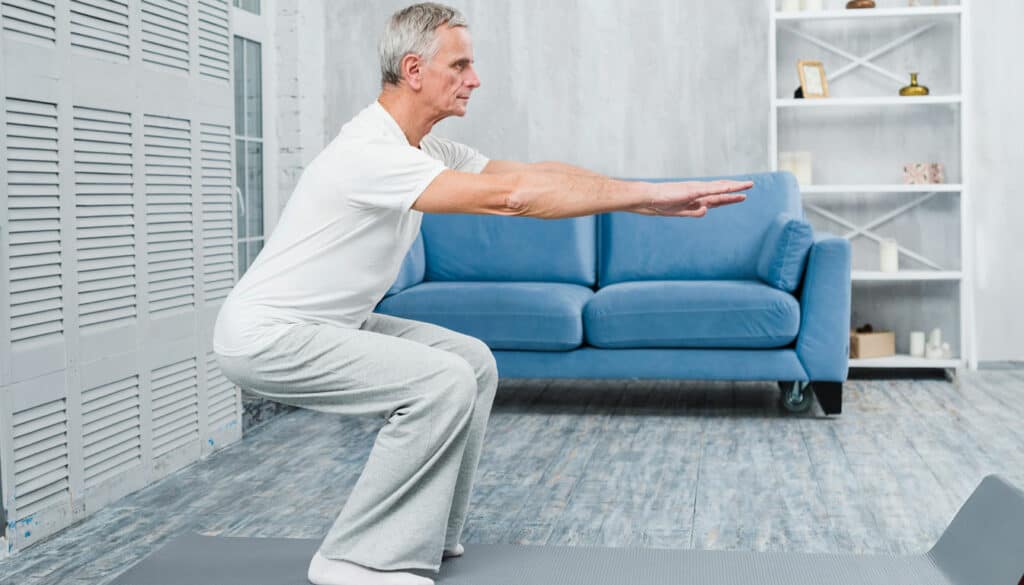
Strength training helps seniors build muscle strength and mass, which in turn improves their overall physical function. This includes the ability to perform daily activities with greater ease, such as climbing stairs, carrying groceries, or getting up from a chair. By targeting specific muscle groups, tailored exercise programs can address the unique needs and limitations of seniors, ensuring safe and effective workouts.
In addition to improving physical function, strength training has various other benefits for older adults. It can increase bone density, reducing the risk of osteoporosis and fractures. Strength training also aids in weight management, as it helps build lean muscle mass, which can in turn increase metabolism. Furthermore, regular exercise has been linked to improved cognitive function and mental well-being in seniors.
It is important to note that frailty is not a fixed state, and seniors of all fitness levels can benefit from strength training. However, it is crucial to design exercise programs that are tailored to the specific needs and abilities of each individual. This may involve modifying exercises, adjusting intensity levels, and incorporating proper rest and recovery periods.
“The key to reversing frailty in seniors is to tailor exercise programs to their individual needs. By focusing on strength training exercises that target specific muscle groups and address functional limitations, seniors can experience significant improvements in their physical abilities and overall quality of life.”
When designing a tailored exercise program, it is recommended to seek guidance from qualified fitness professionals or healthcare providers who specialize in working with seniors. They can provide personalized recommendations based on an individual’s health status, fitness level, and specific goals.
By incorporating strength training exercises into their routine, seniors can take control of their physical well-being and reverse the effects of frailty. With proper guidance and a tailored approach, seniors can regain strength, improve balance, and increase their overall functionality, enabling them to live life to the fullest in their later years.
The Senior Fitness Regimen: Types of Strength Exercises
When it comes to senior fitness, incorporating strength exercises into a regular routine is crucial for maintaining muscle strength, bone density, and overall functional ability. The senior fitness regimen should include a variety of strength exercises that target different muscle groups. This not only helps seniors stay fit and active but also reduces the risk of falls and injuries.
Weight Lifting and Machine Exercises
Weight lifting and machine exercises are excellent options for seniors looking to build strength. Using weights and machines allows for controlled movements and can be easily modified to suit different fitness levels. These exercises specifically target major muscle groups, such as the legs, arms, chest, and back. It’s important for seniors to start with light weights and gradually increase the intensity as they become stronger.
Incorporating Resistance Bands and Body Weight Exercises
Resistance bands provide a low-impact alternative for seniors who may have joint issues or limited mobility. These bands come in varying levels of resistance and can be used to target different muscle groups. Body weight exercises, such as squats, lunges, and push-ups, are also effective in building strength and improving overall fitness levels. These exercises require minimal equipment and can be easily modified to suit individual abilities.
| Exercise | Muscle Group |
|---|---|
| Bicep Curls | Arms |
| Leg Press | Legs |
| Lat Pulldown | Back |
| Chest Press | Chest |
| Shoulder Press | Shoulders |
| Resistance Band Rows | Back |
| Body Weight Squats | Legs |
| Push-ups | Arms, Chest, Core |
By incorporating a mix of weight lifting, machine exercises, resistance band workouts, and body weight exercises, seniors can enjoy a well-rounded and effective strength training program. It’s important to choose exercises that are suitable for your fitness level and always ensure proper form and technique. Make sure to consult with a fitness professional or healthcare provider before starting any new exercise program.
Accessibility and Suitability: Is Strength Training Right for You?
Strength training can be suitable for most individuals, regardless of age or fitness level. However, it’s important to consider individual factors such as any health conditions or physical limitations before starting a strength training program. Consulting with a healthcare professional or a certified personal trainer can help determine the suitability of strength training for an individual.

When considering incorporating strength training into your fitness routine, it’s essential to assess its accessibility and suitability based on your individual fitness level. While strength training offers numerous benefits, it may not be suitable for everyone. Consulting with a healthcare professional or a certified personal trainer is an important first step in determining whether strength training is right for you.
Accessibility is a key consideration when evaluating the suitability of strength training. Some individuals may have physical limitations or health conditions that require modifications or adaptations to exercises. A healthcare professional can assess your individual circumstances and provide recommendations on suitable exercises and training methods that meet both your needs and limitations.
Additionally, your overall fitness level should be taken into account. Strength training can be tailored to different fitness levels, from beginners to advanced individuals. A certified personal trainer can help design a strength training program that aligns with your current fitness level and progressively challenges you over time.
By seeking professional guidance, you can ensure that strength training is safe, effective, and aligned with your specific needs and goals. They can help you understand any potential risks or precautions and provide modifications or alternatives if necessary.
Embarking on Your Strength Training Journey: Where to Start
Before starting your strength training journey, it’s important to take certain steps to ensure your safety and success. Seeking medical clearance from a healthcare professional is crucial, as they can assess your health status and provide guidance on any necessary adaptations or modifications. Additionally, finding the right fitness program that caters to your needs and preferences is essential for long-term adherence and success.
Seeking Medical Clearance
Prior to engaging in any new exercise program, it’s important to consult with a healthcare professional. This is especially important if you have any pre-existing medical conditions or concerns. By seeking medical clearance, you can ensure that you are physically ready to engage in strength training and identify any potential risks or limitations.
Finding the Right Fitness Programmes
When embarking on your strength training journey, finding the right fitness program that suits your needs and preferences is key. Look for programs specifically designed for seniors or older adults, as they will take into account any age-related considerations and ensure proper guidance. Consider factors such as your fitness level, goals, availability of equipment, and personal preferences when choosing a fitness program.
Remember, everyone’s strength training journey is unique, and what works for one person may not work for another. Take the time to explore different programs, try various exercises, and find what feels best for you. This will help ensure long-term adherence and enjoyment, making your strength training journey a positive and fulfilling experience.
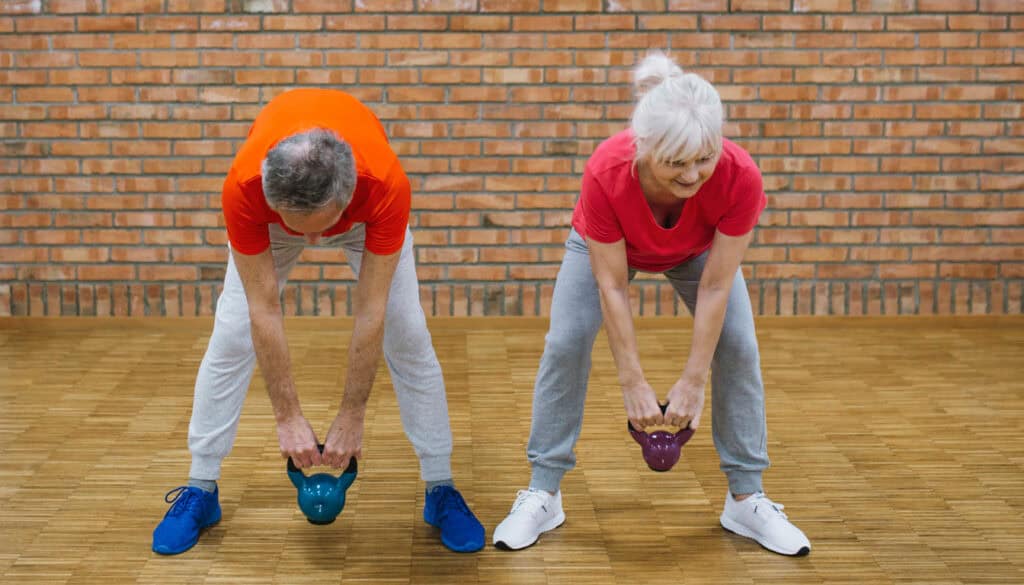
Avoiding Common Pitfalls in Senior Citizen Training
When engaging in senior citizen training, it’s important to avoid common pitfalls that can hinder progress or lead to injury. By understanding and implementing key strategies, seniors can maximize their training experience and achieve long-term success.
Setting a Sustainable Pace
One of the most significant pitfalls seniors may encounter is pushing themselves too hard, too soon. It’s crucial to set a sustainable pace that allows for gradual progression over time. This approach ensures that the body adapts to the demands of training while minimizing the risk of overexertion or burnout.
Choosing the Correct Intensity and Frequency
Selecting the right intensity and frequency for senior citizen training is essential. It’s important to find a balance that challenges the body without causing excessive strain or fatigue. Gradually increasing intensity and incorporating rest days allows for proper recovery and reduces the risk of injury. Consulting with a certified fitness professional can help determine the appropriate intensity and frequency based on individual capabilities and goals.
Achieving Holistic Benefits Through Age-Friendly Fitness
Age-friendly fitness programs go beyond physical benefits to address the holistic needs of seniors in their fitness journey. These programs recognize that senior fitness is not just about exercise but also about social connectedness, mental well-being, and emotional support. By incorporating these elements, age-friendly fitness programs provide a comprehensive approach to senior wellness.
Through age-friendly fitness, seniors can experience a range of holistic benefits:
- Physical Well-being: Age-friendly fitness programs help seniors improve their physical strength, flexibility, and balance. This enhances their mobility and reduces the risk of falls and injuries.
- Social Connection: Participating in age-friendly fitness activities allows seniors to engage with like-minded individuals and build supportive social connections. This can help combat feelings of isolation and loneliness.
- Mental Well-being: Regular exercise and social interaction through age-friendly fitness can contribute to improved mental well-being in seniors. Physical activity releases endorphins, promoting feelings of happiness and reducing stress and anxiety.
- Emotional Support: Age-friendly fitness programs provide a supportive environment where seniors can share their experiences, challenges, and achievements. This sense of community and emotional support encourages and motivates seniors to continue their fitness journey.
By focusing on holistic benefits, age-friendly fitness programs empower seniors to lead active and fulfilling lives. These programs promote not only physical health but also overall well-being, enabling seniors to enjoy a higher quality of life.
Warm-Up and Cool Down: Essential Practices for Older Adult Training
Proper warm-up and cool-down practices are essential for older adult training to prevent injury and maximize the benefits of exercise. These practices help prepare the body for physical activity and aid in recovery. In this section, we will discuss the importance of dynamic stretching and effective cool down routines for seniors.
The Importance of Dynamic Stretching
Dynamic stretching involves moving through a range of motion to warm up the muscles and increase flexibility. Unlike static stretching, which involves holding a stretch for an extended period, dynamic stretching keeps the body in motion, mimicking the movements of the upcoming activity.
Dynamic stretching has several benefits for older adults:
- Increased flexibility: Dynamic stretching helps improve joint mobility and range of motion, making daily activities easier and reducing the risk of injury.
- Better circulation: The movements involved in dynamic stretching increase blood flow to the muscles, delivering oxygen and nutrients while removing waste products.
- Improved performance: By warming up the muscles and increasing flexibility, dynamic stretching prepares the body for exercise, enhancing overall performance.
Examples of dynamic stretching exercises for older adults include leg swings, arm circles, walking lunges, and torso twists.
Effective Cool Down Routines for Seniors
Cooling down after exercise is just as important as warming up. It allows the body to return to its baseline state gradually and helps prevent muscle soreness and stiffness. A well-designed cool down routine should include several components:
- Low-intensity exercise: Engaging in light aerobic activity, such as walking or cycling, helps gradually lower the heart rate and ease the transition from exercise to rest.
- Static stretching: Static stretching involves holding a stretch for 15-30 seconds to improve flexibility and promote muscle relaxation.
- Deep breathing and relaxation techniques: Taking deep breaths and practicing relaxation techniques, such as mindfulness or meditation, can help calm the mind and decrease stress levels.
Implementing an effective cool down routine can aid in muscle recovery, reduce the risk of post-workout muscle soreness, and promote flexibility. It is an important step in a comprehensive older adult training program.
By incorporating dynamic stretching into the warm-up and following effective cool down routines, older adults can optimize the benefits of their training sessions. These practices promote flexibility, reduce the risk of injury, and support overall well-being, allowing older adults to stay active and enjoy an active lifestyle.
Strength Training at Home: Simple and Safe Routines for Seniors
Seniors can engage in strength training at home using simple and safe routines. It’s a convenient and accessible way to improve overall strength, mobility, and independence. Here are some examples of exercises that can be done at home:
1. Body Weight Exercises: These exercises use your own body weight as resistance and require no equipment. Examples include squats, lunges, push-ups, and planks. Start with a few repetitions and gradually increase as you build strength.
2. Resistance Bands: Resistance bands are affordable and versatile tools for strength training. They come in different resistance levels, allowing you to gradually progress. You can use them for exercises such as bicep curls, overhead presses, and seated rows.
3. Household Items as Weights: If you don’t have access to dumbbells or kettlebells, you can get creative and use household items as weights. For example, you can use water bottles as dumbbells or filled backpacks as weighted vests.
When engaging in strength training at home, it’s important to ensure proper form and technique. Here are a few tips to keep in mind:
“Start with lighter weights or resistance bands and focus on maintaining proper form. Gradually increase the intensity and resistance as you become more comfortable and confident.”
Additionally, it’s essential to follow a progressive training program suitable for your individual capabilities. A certified fitness professional can help create a tailored program that addresses your specific goals and needs.
By incorporating strength training into your daily routine at home, you can improve muscle strength, maintain bone density, and enhance overall functional fitness. Remember to listen to your body, take rest days, and enjoy the journey towards a stronger and healthier you!
Navigating Motivation and Consistency in Senior Exercise Classes
When it comes to senior exercise classes, navigating motivation and consistency can sometimes be a challenge. Maintaining a regular fitness routine can be difficult, especially as we age. However, there are strategies that can help seniors stay motivated and consistent in their fitness journey.
The Role of Accountability and Coaching
One effective way to stay motivated and consistent is through accountability. Joining a senior exercise class with a supportive community can provide the necessary motivation to keep going. Having a group of individuals with similar goals and experiences can foster a sense of camaraderie and encouragement.
“Being part of a community where everyone supports and motivates each other can make a huge difference in staying consistent with exercise.”
Additionally, having a coach or instructor who can provide guidance and support can greatly enhance motivation and consistency. A knowledgeable and experienced coach can create tailored workout plans, track progress, and provide feedback, ensuring that seniors stay on track and make continuous progress.
Benefits of Personal Training Tailored for Seniors
Personal training tailored specifically for seniors can offer numerous benefits in terms of motivation and consistency. Working one-on-one with a personal trainer who specializes in senior fitness can provide individualized attention and support.
Personal trainers can design customized workout programs that address the unique needs and abilities of seniors. These programs can be adapted to accommodate any physical limitations or health concerns, ensuring a safe and effective workout. The personalized approach of personal training helps seniors stay motivated, as each session is designed to suit their specific goals and preferences.
Accountability, coaching, and personal training are all valuable tools for seniors to navigate motivation and consistency in their exercise classes. By embracing these strategies, seniors can overcome challenges, stay motivated, and experience the many physical and mental benefits of regular exercise.
Summary
Strength training after 55 is essential for seniors to maintain strength, independence, and overall well-being. As the number of adults over 55 continues to grow, there is a rising tide of proactive health among seniors. This demographic shift has led to a change in mindset among the baby boomer generation, who are now more likely to participate in exercise and physical activity.
The shift towards age-friendly fitness programs has opened up opportunities for seniors to engage in tailored exercise programs that provide holistic benefits. By understanding the importance of strength training, seniors can embark on their fitness journey with confidence, focusing on longevity and vitality in their later years.
Age-friendly fitness programs recognize that older adults have unique needs and abilities. These programs incorporate a combination of cardiovascular activity, strength training, and balance training, ensuring that seniors receive a comprehensive fitness regimen that addresses their physical and mental well-being.
By incorporating strength training exercises into their routine, seniors can enhance their muscular strength and mass, improve physical function, and manage chronic health conditions more effectively. Additionally, strength training can help reverse frailty in older adults, enabling them to regain strength, improve balance, and increase overall functionality. With age-friendly fitness programs and personalized support, seniors can achieve their fitness goals while enjoying a vibrant and active lifestyle.
FAQ
What is “The Silver Tsunami”?
“The Silver Tsunami” refers to the growing number of adults over 55 years old. This demographic shift has significant implications for healthcare and wellness. Seniors are now approaching fitness in a more proactive way, recognizing the importance of exercise and physical activity for maintaining their health and well-being.
Why is strength training important for seniors?
Strength training for seniors has been proven to provide numerous benefits. It helps enhance muscular strength and mass, improve physical function, and manage chronic health conditions such as diabetes and osteoporosis. Additionally, strength training can help seniors manage conditions like low back pain and obesity.
Can tailored exercise programs reverse frailty in seniors?
Yes, frailty is a common concern among older adults, but research has shown that tailored exercise programs can help reverse frailty in seniors. By incorporating strength training exercises that target specific needs and abilities, seniors can regain strength, improve balance, and increase overall functionality.
What types of strength exercises should seniors include in their fitness regimen?
The senior fitness regimen should include a variety of strength exercises that target different muscle groups. This can include weight lifting, machine exercises, resistance band workouts, and body weight exercises. It’s important to choose exercises that are suitable for the individual’s fitness level and ensure proper form and technique.
Is strength training suitable for all seniors?
Strength training can be suitable for most individuals, regardless of age or fitness level. However, it’s important to consider individual factors such as any health conditions or physical limitations before starting a strength training program. Consulting with a healthcare professional or a certified personal trainer can help determine the suitability of strength training for an individual.
What should seniors do before embarking on a strength training journey?
Before embarking on a strength training journey, it’s crucial to seek medical clearance from a healthcare professional. They can assess an individual’s health status and provide guidance on any necessary adaptations or modifications. Additionally, finding the right fitness program that caters to seniors’ needs and preferences is essential for long-term adherence and success.
How can seniors avoid common pitfalls in their exercise classes?
When engaging in senior citizen training, it’s important to avoid common pitfalls that can hinder progress or lead to injury. Setting a sustainable pace, gradually increasing intensity and incorporating proper frequency are crucial for long-term success and reducing the risk of overexertion or burnout.
What are the holistic benefits of age-friendly fitness?
Age-friendly fitness aims to address the holistic needs of seniors in their fitness journey. In addition to physical benefits, age-friendly fitness programs focus on social connectedness, mental well-being, and emotional support. This approach ensures a comprehensive approach to senior fitness and overall wellness.
Why are warm-up and cool-down important for older adult training?
Proper warm-up and cool-down practices are essential for older adult training to prevent injury and maximize the benefits of exercise. Dynamic stretching is beneficial for increasing mobility and preparing the body for activity, while effective cool down routines promote recovery and flexibility.
Can seniors engage in strength training at home?
Yes, seniors can engage in strength training at home using simple and safe routines. These can include exercises using body weight, resistance bands, or household items as weights. It’s important to ensure proper form and technique and follow a progressive training program suitable for individual capabilities.
How can seniors stay motivated and consistent in their fitness journey?
Navigating motivation and consistency can be challenging in senior exercise classes. The role of accountability and coaching can help seniors stay motivated and consistent in their fitness journey. Personal training tailored for seniors offers additional support and guidance, ensuring adherence to exercise programs and maximizing results.
Why is strength training important for seniors after 55?
Strength training after 55 is essential for seniors to maintain strength, independence, and overall well-being. With the rising tide of proactive health among seniors, the shift towards age-friendly fitness programs has opened up opportunities for seniors to engage in tailored exercise programs that provide holistic benefits. By understanding the importance of strength training, seniors can embark on their fitness journey with confidence, focusing on longevity and vitality in their later years.



